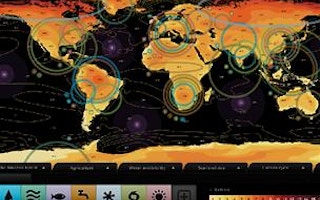A global average temperature rise of 4 degC could have a severe impact on Singapore, including flooding, coastal land loss and heat-related deaths.
That is according to a new map launched here yesterday by the Hadley Centre of the United Kingdom’s Met Office, one of the leading centres for climate prediction. The map shows the potential impact of climate change in South-east Asia.
Under the scenario, global average sea levels could rise by up to 80cm by the end of the century, translating to a local sea-level rise of about 65cm.
‘For a small country with a high population density and surrounded by sea, this could have implications for flooding, coastal land loss and salt water intrusion of groundwater aquifers,’ said the centre.
Water supplies could also be affected, as parts of South-east Asia could see droughts occurring more than twice as frequently, it found.
Singapore’s unique geography makes rising temperatures a further health concern, as they could lead to an ‘urban heat island’ effect, which makes a built-up area significantly warmer than its surroundings. Increased temperatures are a major factor in heat-related mortalities, the Hadley Centre said.
Singapore could also be affected by more haze pollution, as higher temperatures would increase the risk of forest fires across Indonesia.
Presenting the map to reporters at the Hilton Hotel yesterday, Dr Chris Gordon, the centre’s head of science partnerships, said this scenario was considered ‘moderate’. In a worse scenario, temperatures could go up by 6 deg C, he said.
The objective of the map is ‘an attempt to bring climate change home to people, to help people relate to it in different areas of the world’.
In preparing the map, the Hadley Centre used its in-house climate model, which was run as many as 34 times on scenarios developed by the United Nations’ Intergovernmental Panel on Climate Change.
The map predicts that a 4 deg C temperature rise would have a negative impact on Indonesia’s fishing industry, and could lead to a drop in rice production in Thailand, and more cyclones in the Philippines.
Dr Gordon said the timescale for this depends on the rate of increase of greenhouse gas emissions into the atmosphere.
‘If we carry on at the rate we are now, it could happen perhaps by the 2060s… if action is taken, it could be delayed,’ he said.
Dr Gordon added that the Hadley Centre was collaborating with Singapore’s Meteorological Services Division on climate data and research.
The interactive map is now on Google Earth, and can be accessed at www.metoffice.gov.uk/climate-change/guide/impacts/high-end
This article originally appeared in The Straits Times.








